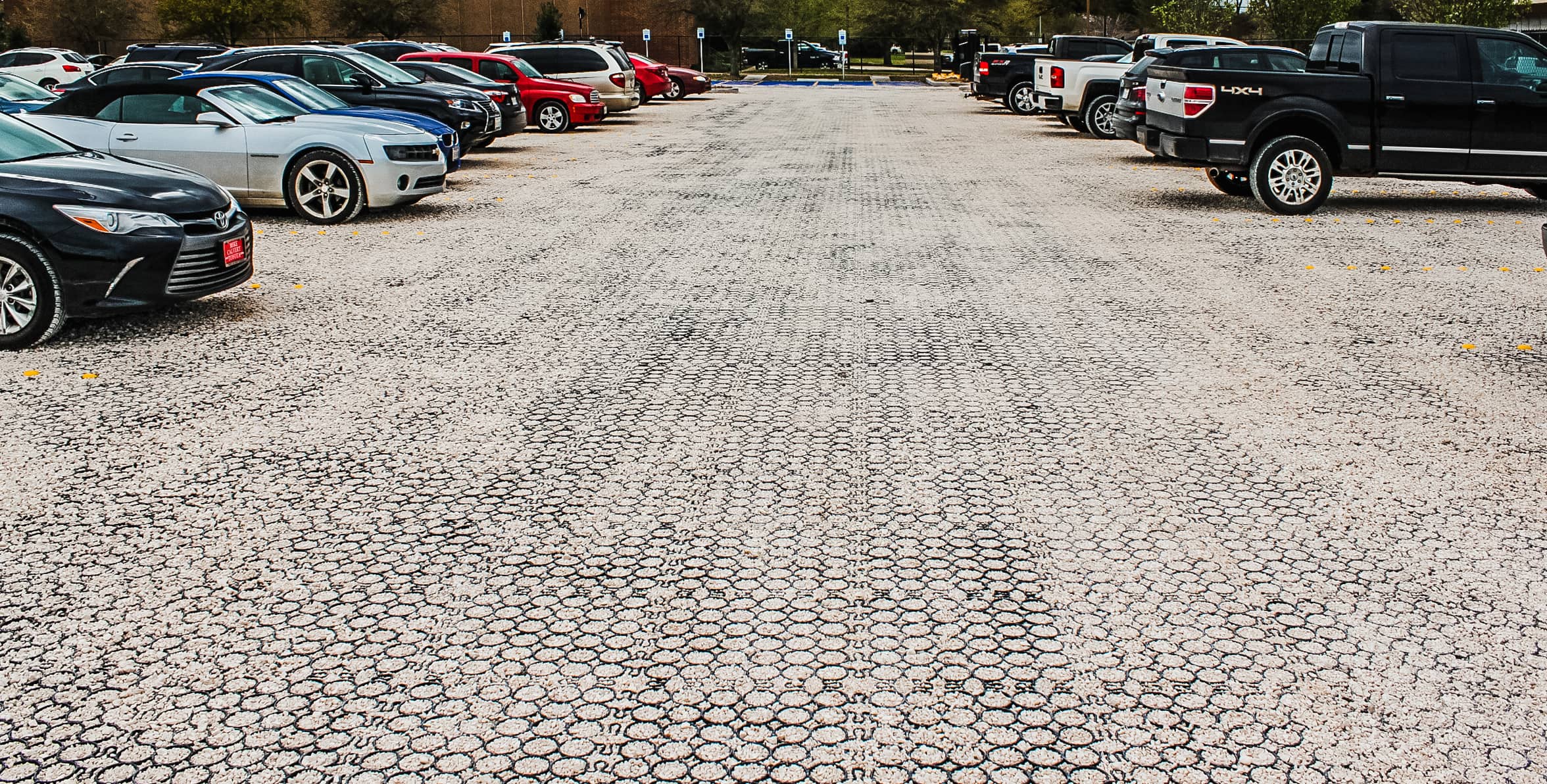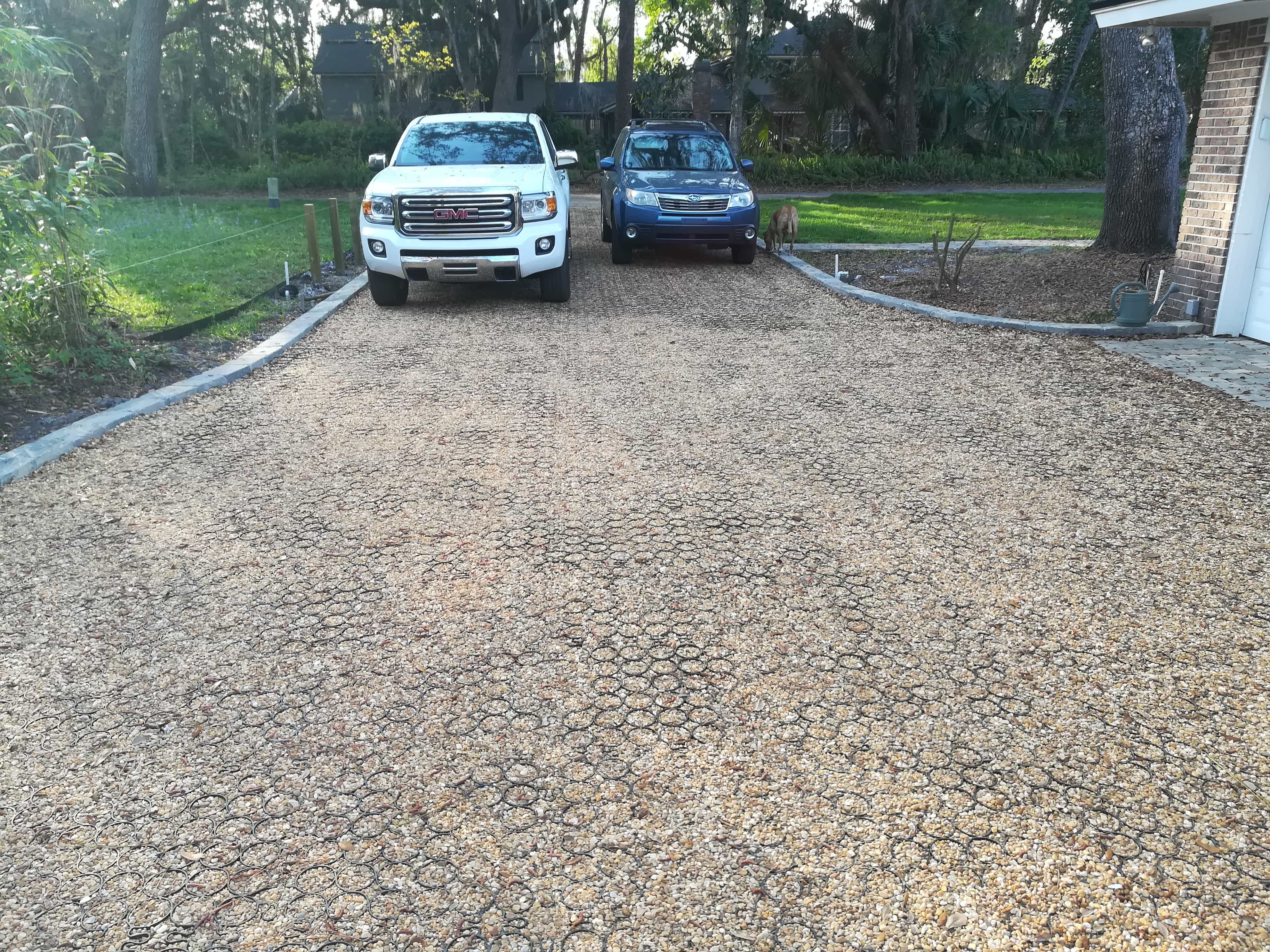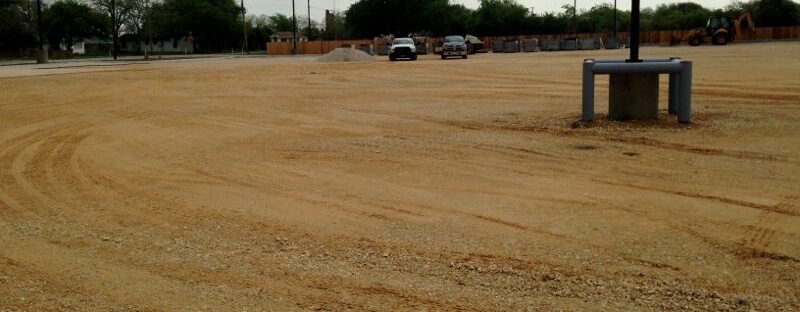Concrete is one of the most harmful construction materials on the planet when it comes to measuring its environmental impact. The process by which concrete is made releases tons of CO2 into the atmosphere and accounts for about 8% of the world’s carbon dioxide emissions while consuming nearly 3% of its energy supply.
However, since concrete is unlikely to be phased completely out of use anytime soon, we can reduce the amount we use wherever possible. One of the ways to lower our concrete carbon footprint is by using alternative paving materials. There are plenty of options with a lower carbon footprint than concrete that work just as well for paving surfaces.
If you’re looking to lay new pavement down for any reason, let’s take a look at some much healthier options that will work just as good, if not better than concrete.
1. Porous Asphalt
Porous asphalt is more environmentally-friendly than concrete for a number of reasons. First, it produces much less runoff, which lessens the burden on local storm systems. It also requires much less energy to make and puts less carbon dioxide in the air. It also doesn’t require as much maintenance as concrete if it’s properly maintained.
Although porous asphalt isn’t entirely permeable, it does allow enough stormwater to pass through it that it lessens the need for additional drainage systems and storage basins.
Porous asphalt is able to handle most general traffic, but is weak and doesn’t whereas well as traditional asphalt. Alos, to stay pervious it needs frequent cleaning or power washing. It is a viable option to be considered a choice for residential homeowners in need of a new driveway to commercial business owners looking to install a parking lot.
2. Grid-Supported Grass
Grid-supported grass is one of the environmentally-friendly pavement options available. There are many types of grids designed to stabilize and support grass for handling light to moderate traffic. The most eco-friendly version of these is plastic.
Recycled plastic grids can be laid down over the top of grass, allowing the grass to grow up and through the holes in the grids. These grids have a tiny carbon footprint as they’re produced with recycled materials.
They are also almost entirely permeable and allow for the natural flow of water directly through them and into the soil below. They are not suitable for heavy, repeated traffic from industrial vehicles, but they work perfectly well for commercial and residential usage.
You can also use them to turn grass areas into parking spaces without having to obtain any permits, as you would with porous asphalt, concrete, or any other material that requires excavation.
3. Slag/Gravel
Slag and gravel are similar materials that also work quite well as pavement. Slag is best used in residential driveways and works best when stabilized with plastic pavers.
Gravel can also be used in a similar fashion, and it works much better when stabilized. If you want to use gravel for commercial purposes or you just want to prevent it from spreading, permeable plastic grid pavers can be used to stabilize it.
TRUEGRID PRO PAVERS are an example of a superior paving product that can stabilize gravel and make it suitable for supporting heavy traffic for many years. Suitable for both commercial and residential use, these pavers are made from 100% recycled plastic and help prevent tons of CO2 from being released into the atmosphere each year.
You can use TRUEGRID pavers to construct a durable, clean-cut driveway or parking lot that never spreads, and is almost fully permeable as well. The eco-friendly effect of these pavers is also felt in the long-term, as they can last up to 50 years with very little maintenance required.
TRUEGRID pavers provide the best of both worlds when it comes to environmentally-friendly pavement. They are much more durable than the average grass-grids, more permeable than porous asphalt, and the installation can be completed in as little as one day.
To provide drainage, detention, and structural strength to handle cars and truck traffic, simply excavate the desired paving area to a depth of about 8 to 12 inches depending on the site specifics, lay a fabric at the bottom, fill the pit with gravel, compact it, snap the interlocking pavers into place over the top of the gravel, pour more gravel into the surface of the pavers, and compact it into the empty cells with a heavy vehicle or roller.
TRUEGRID is On An Eco-Friendly Mission to Reduce Our Carbon Footprint
In order to help win the ever-important battle against global warming, reducing our concrete carbon footprint is a must. Concrete is one of the most harmful materials to make when it comes to releasing emissions into the air, so we must replace it wherever possible.
TRUEGRID permeable pavers are the best solution to our alternative paving needs. They are just as durable as any other paving material, yet permeable, long-lasting, low-maintenance, and incredibly eco-friendly.
If you want to do your part to reduce our concrete carbon footprint, get in touch with a pavement specialist at TRUEGRID today.



